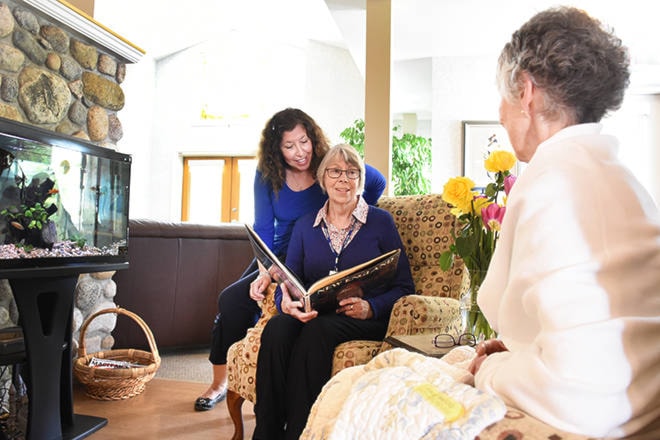Like many of the people who give of their time and compassion, Hospice House volunteer co-ordinator Linda Brooks also was on the receiving end of all that kindness.
“My father died in hospice and I saw what it was like and I saw what it could be like for others and that made me want to get involved,” said Brooks who has worked in hospice for nine years, the last five at Moog and Friends. “That experience of being there gives you an insight as to what people need and what people want.
“We do the best that we can. We have people who have come in here who are in horrible pain and haven’t had the quality of life and we’ve been able to give them that quality of life, they can be with family and friends until the end of their life and they can be comfortable.”
With anywhere from 60-90 people in the palliative care program at a time, surprisingly filling the more than 70 volunteer spots is not a problem.
“I actually turn multitudes of people away. I’m probably the most fortunate volunteer co-ordinator in the region,” she said. “The people that come here really want to volunteer because they’ve had an experience with hospice and they realize what a troubling time it can be for a family and they want to give back.”
Volunteers work both at Hospice House as well as out in the community helping people with errands, doctors appointments, walking the dog or just or just lending an ear.
When it comes to picking her helpers, Brooks has a particular individual in mind.
“I ask them about how they would deal with a difficult family situation because we have deaths here that are beautiful because the families are so supportive and everybody is all on the same page and then we have very difficult times…” she said. “I’m mostly looking for people who have a gentle calmness about them. This is just such a sensitive very emotional time for families and residents so you just need those people who are really comfortable in their own skin.
“You’ve got to be somebody who isn’t wanting to come in here and fix things because there is nothing we can fix, we’re just here to support and do whatever we can.”
New recruits undergo 40 hours of training and another 10 hours with a current volunteer before going out on their own.
But in spite of the training there are times when the work can have a very emotional impact on individuals according to Brooks.
“We’re all going to have our moments when we break down and lose it because we all are going to be drawn to different people but we’re here for each other,” she said. “But for our own mental health and emotional health we have to look at it as we’re giving the best possible life we can give them until they take their last breath.
“That’s the way we have to look at it from our point of view and it may sound cruel but if you took every death to heart it would become undoable really.”
She added each member of the team from paid staff to volunteers work closely together, watching out for each other and ready to jump in to help and support wherever necessary.
And thanks to her pilot project last year the there are now youth (high school) volunteers working with hospice.
“It’s exciting people of that age want to deal with death and dying, I don’t think I would have,” said Brooks. “It’s a really good dynamic and they have really good energy. Everyone loves to have young people around, ‘reminds me of my grandson, or my daughter when she was her age.’”
Volunteering in the world of palliative care is not for everyone but for each those who do, it is an easing of the burden of life and death for those who pass and those left behind.
